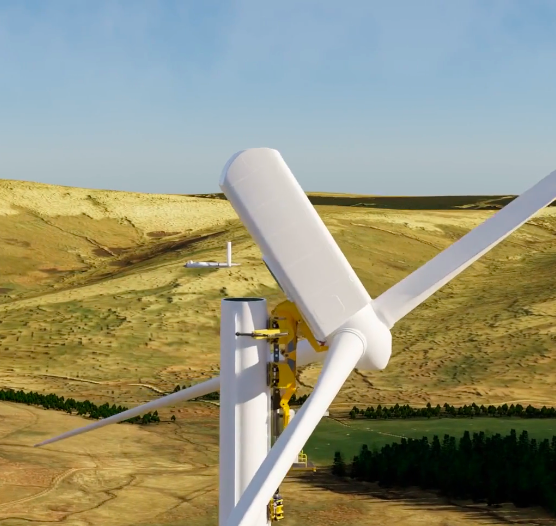by Orlando Jenkinson / Windpower Monthly
A wind installation company that employs robotics to “self-install” turbines plans to demonstrate its concept with a 2MW onshore machine and eventually use its technology for floating projects.
SENSEWind’s flagship Sense Set (self-erecting turbine) system differs from traditional turbine installation methods reliant on tall cranes by using a specially designed machine system.
The concept uses a remote-controlled machine ‘carriage’ working in combination with cranes during turbine construction.
A crane is used to install the base of the turbine, before mounting the Sense Set machine onto guide rails that allow it to “self-install” — moving up the tower while carrying additional sections of the tower, and nacelle with attached rotor blades, under its own power. These are then placed on top of one another with a team of technicians working inside the tower to fix and tighten the bolts, securing each section in place.
SENSEWind chair Julian Brown – a former UK country manager for Vestas, told Windpower Monthly, that this will be safer than existing installation methods.
The company is working with component supplier SM Industries – formerly Valmont – to produce a ‘triple rail’ turbine tower that pairs with the remote-controlled carriage machine for the concept.
SENSEWind claims the concept can scale the speed of turbine innovation by making larger and more remote turbines easier to build and maintain.
“The beauty of the system [is that it] allows easy dismantling for major service and component swap out. This is a really important feature for floating wind to avoid tow back of the foundation to shore,” Brown added.
SENSEWind received a grant as part of the UK government’s floating offshore wind demonstration programme, which it will use to adapt the concept for a larger 15MW offshore wind turbine.
The company has already completed a test of the concept at a single 225kW wind turbine in Ireland and now plans a 2MW onshore demonstration somewhere in the UK in late 2023.
Two sites are currently under consideration for the demonstration, which Brown said will use a used Vestas V80 turbine.
